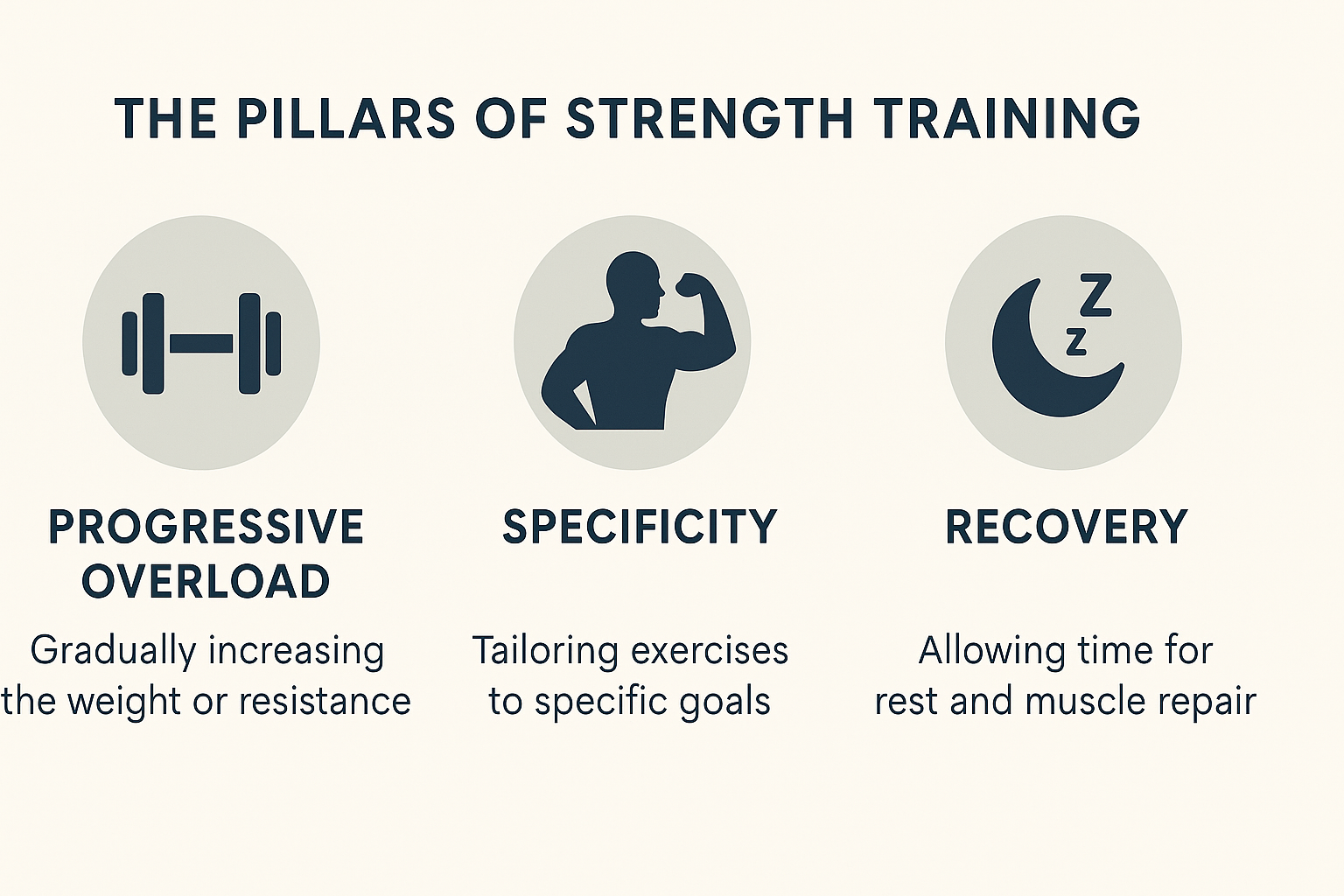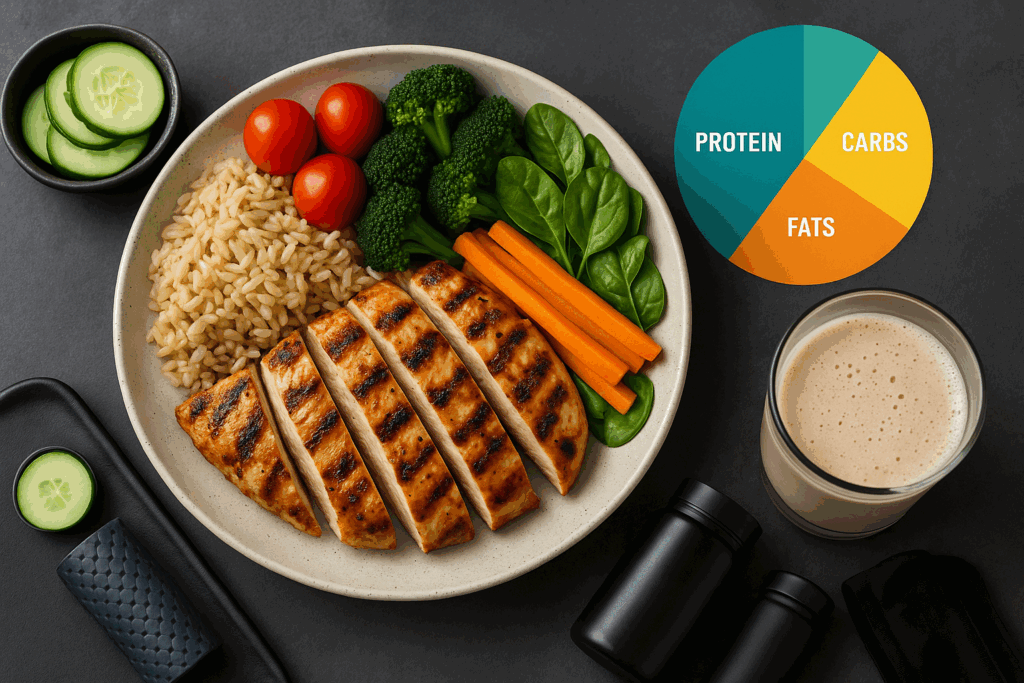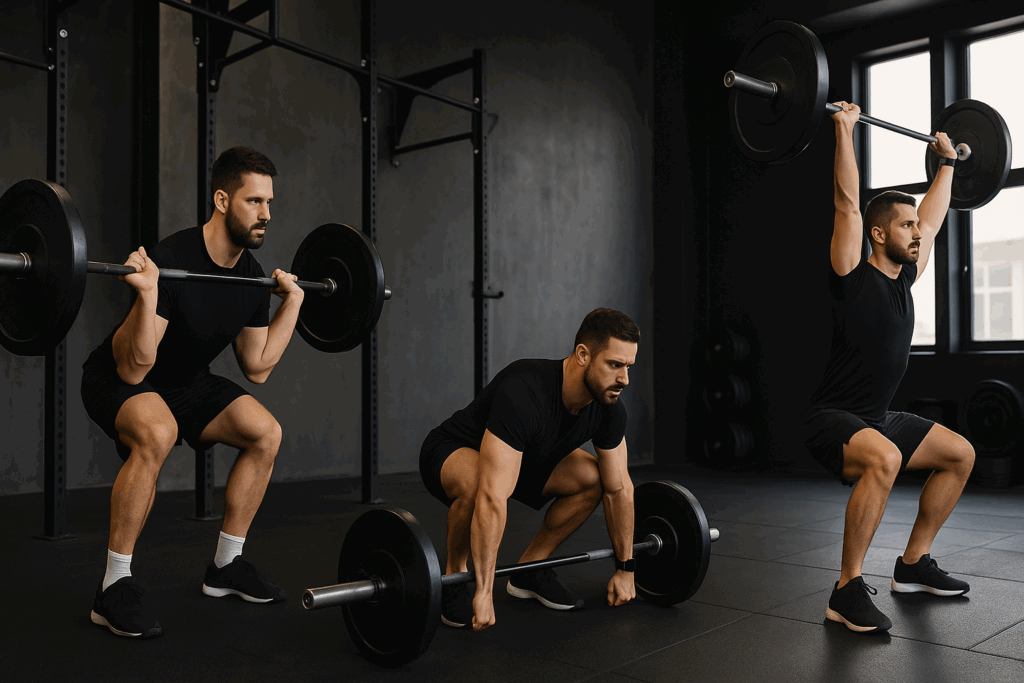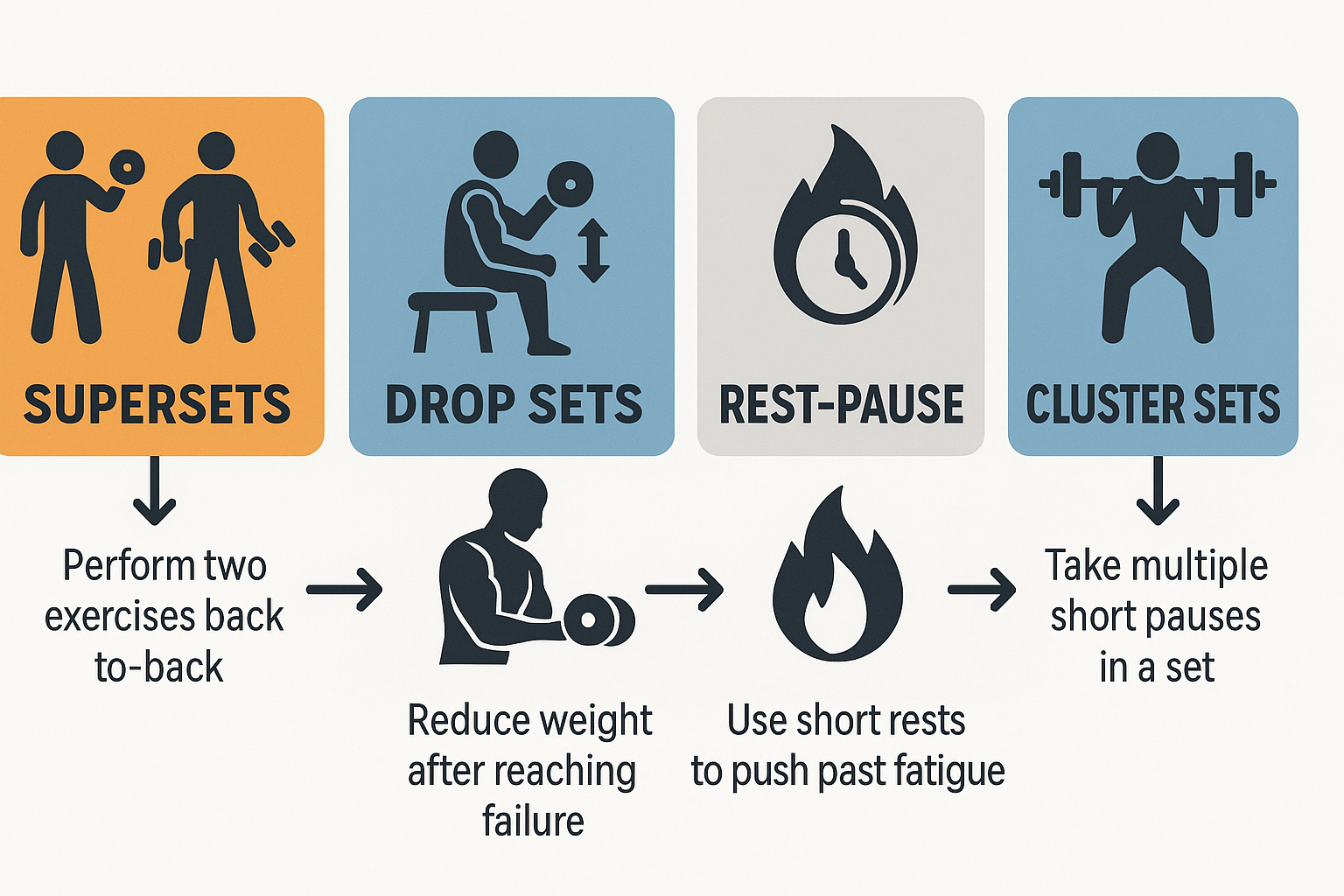Introduction: Why Fitness Guys Need a Strategic Strength Blueprint
In the ever-evolving world of physical fitness, achieving peak condition requires far more than sporadic workouts or trend-based routines. For fitness guys committed to sculpting lean muscle and shedding fat, a calculated and science-backed approach to strength training is not only beneficial but essential. Unlike generic workout plans, a strength blueprint provides a clear path rooted in physiology, progressive overload, metabolic conditioning, and recovery principles. The rise of informed training practices among fitness enthusiasts has made it imperative to move beyond guesswork toward intelligently designed programming tailored for real, measurable results.
Today, many best fitness men follow structured regimens not just to look better but to perform at a high level in all aspects of life. This strategic transformation is fueled by advancements in sports science and nutrition, allowing male gym goers to optimize every set, rep, and recovery session. Whether your goal is to achieve hypertrophy, improve athletic function, or burn excess fat, understanding the “why” behind your actions can be the ultimate game-changer. This comprehensive guide provides the foundational elements and advanced tactics fitness guys need to turn ambition into achievement while embracing both discipline and flexibility.
You may also like: The Ultimate 30-Day Workout Plan for Men Working Out in the Gym: Proven Full Body Strength Exercises to Maximize Results
Building a Foundation: The Core Principles of Strength Training
Before embarking on a high-level program, it is critical to understand the core tenets that underpin all effective strength training. These principles are not abstract theories but practical frameworks proven by decades of research and real-world results. The first cornerstone is progressive overload, which involves systematically increasing the demands placed on the muscles over time. Without this gradual escalation, gains in muscle mass and strength plateau quickly.
Equally important is specificity: the idea that your training must align directly with your goals. If fat loss is the objective, your blueprint should prioritize metabolic conditioning and caloric expenditure, while muscle building requires a focus on volume and time under tension. Another core principle is recovery—often overlooked but essential. Muscle repair and growth occur during rest, not during the workout itself, making sleep, hydration, and nutrient timing crucial aspects of your regimen.
Male fitness plans that overlook these fundamentals often lead to frustration and burnout. Integrating these core concepts allows for sustainable progress and mitigates the risk of overtraining or injury. For the best results, man fitness enthusiasts should treat these pillars not as optional extras but as non-negotiable elements of a long-term success strategy.

Strategic Programming: Designing the Optimal Weekly Split for Fitness Guys
Creating a program that works for fitness guys begins with choosing the right training split. While full-body routines are ideal for beginners, more experienced individuals often benefit from targeted splits that allow for greater intensity and volume per muscle group. One popular approach is the upper-lower split, which alternates between upper-body and lower-body days across four training sessions per week. This structure balances frequency with recovery, enabling fitness mannen to train effectively without overreaching.
Push-pull-legs (PPL) is another versatile split, dividing workouts into pushing movements (chest, shoulders, triceps), pulling movements (back, biceps), and legs. This approach works well for gym men who train five to six days per week and want to maximize muscle hypertrophy. For those focusing on strength with minimal fat gain, a hybrid model incorporating both compound lifts and accessory work can be particularly effective.
Regardless of the chosen split, each workout should feature a mix of compound and isolation exercises, progressive overload, and adequate rest intervals. Tracking your lifts and monitoring fatigue are indispensable components of long-term success. Fitness guys should view their program as a living document—subject to change and refinement based on feedback, performance metrics, and evolving goals.

The Science of Muscle Hypertrophy: How Fitness Guys Can Maximize Growth
Hypertrophy—the enlargement of muscle fibers in response to training stimuli—is the cornerstone of most muscle-building efforts. For fitness guys, understanding the mechanisms behind hypertrophy can greatly enhance the efficiency of their workouts. There are three primary pathways to muscle growth: mechanical tension, metabolic stress, and muscle damage. An effective strength blueprint will incorporate all three to stimulate maximal adaptation.
Mechanical tension is created through heavy resistance and slow, controlled repetitions, often seen in compound lifts like squats, deadlifts, and bench presses. Metabolic stress occurs when muscles are pushed to near failure with higher rep ranges and shorter rest intervals, leading to the “pump” many gym men seek. Lastly, muscle damage, characterized by microtears in the muscle fibers, is typically induced through eccentric loading or novel movements.
To achieve optimal hypertrophy, mens fitness routines should include a blend of rep ranges (6–12 for hypertrophy, 3–5 for strength, and 12–20 for endurance), time-under-tension strategies, and progressive loading. Periodization—alternating between phases of intensity, volume, and deloads—further enhances results while preventing stagnation. Through intelligent design and adherence to hypertrophic principles, fitness guys can build lean muscle mass efficiently and sustainably.

Burn Fat, Not Muscle: Nutrition Strategies for Lean Gains
Even the most scientifically designed training program will falter without proper nutrition. For fitness guys aiming to build muscle while burning fat, the goal is to establish a slight caloric surplus or deficit depending on the training phase, while maintaining a high protein intake to preserve lean mass. A typical guideline is 0.8 to 1.2 grams of protein per pound of body weight, with carbohydrates and fats adjusted based on activity levels and metabolic rate.
One effective strategy is nutrient timing—ensuring that carbohydrates are consumed around workouts to fuel performance and recovery, while protein is distributed evenly across meals to support muscle protein synthesis. For male fitness goals, intermittent fasting can be a viable option, but it requires meticulous planning to meet caloric and nutrient needs.
Supplements like whey protein, creatine monohydrate, and omega-3 fatty acids can support recovery and metabolic health, but they are not substitutes for a solid diet. Fitness mannen who prioritize whole foods, hydration, and micronutrient diversity often experience better long-term results. When integrated with a robust training plan, nutrition becomes a powerful catalyst for transformation, enabling gym men to torch fat without compromising muscle integrity.

Power Lifts and Performance: The Role of Compound Movements in Muscle Building
Compound movements—multi-joint exercises that engage multiple muscle groups—form the backbone of any serious strength blueprint. Exercises like the squat, deadlift, bench press, and overhead press offer unparalleled benefits in terms of mechanical load, hormonal response, and overall efficiency. These lifts stimulate large muscle groups and facilitate the release of anabolic hormones like testosterone and growth hormone.
For fitness guys looking to build mass and strength simultaneously, compound lifts are non-negotiable. These exercises not only develop raw power but also improve neuromuscular coordination, core stability, and functional fitness. Moreover, they allow for progressive overload with heavier weights, which is a key driver of hypertrophy.
A well-structured program should include at least one major compound lift per workout, supported by accessory exercises that target lagging muscle groups or enhance joint stability. Male gym enthusiasts who embrace compound training often see faster, more consistent results compared to those relying solely on machines or isolation work. When performed with proper form and intent, these lifts become transformative tools in the arsenal of every serious man fitness enthusiast.

Smart Cardio: Fat Loss Without Sacrificing Muscle for Fitness Guys
Cardiovascular training is a double-edged sword in the world of strength and aesthetics. Done correctly, it enhances metabolic conditioning, heart health, and fat loss; done incorrectly, it can compromise muscle mass and performance. For fitness guys, the key lies in selecting the right type of cardio and integrating it strategically within the training week.
High-intensity interval training (HIIT) has emerged as a highly effective method for burning fat while preserving muscle. Short bursts of intense activity followed by recovery periods can increase post-exercise oxygen consumption and elevate metabolic rate for hours. Alternatively, steady-state cardio, such as brisk walking or cycling at a moderate pace, is less taxing on the nervous system and can aid recovery.
Timing also matters. Performing cardio after weight training or on separate days can help prevent interference with strength gains. Nutrition support, especially protein intake, is vital to avoid catabolism. By taking a measured and informed approach, fitness mannen can reap the benefits of cardio without undermining their hard-earned muscle gains.
Advanced Training Techniques for Experienced Fitness Guys
Once the foundation is established, many fitness guys find that traditional training methods yield diminishing returns. To break through plateaus, advanced strategies such as supersets, drop sets, rest-pause, and cluster sets can be employed. These techniques intensify training stimulus and push muscles beyond their adaptive threshold.
Supersets involve performing two exercises back-to-back with minimal rest, often targeting opposing muscle groups. Drop sets extend a set by reducing the weight and continuing the exercise, leading to greater fatigue and muscle recruitment. Rest-pause sets break a single heavy set into multiple mini-sets with short breaks, enhancing both strength and volume.
These methods should be used sparingly and with purpose, as they place significant stress on the central nervous system. Tracking progress and allowing adequate recovery is essential when incorporating advanced protocols. For gym men who have mastered the basics, these tools offer a way to elevate performance and spark new growth while maintaining training enthusiasm.

Optimizing Recovery and Sleep: The Hidden Pillars of Strength
Recovery is where progress truly happens. Without sufficient rest and restoration, even the best male fitness program will yield subpar results. Sleep, in particular, plays a critical role in hormone regulation, muscle repair, and cognitive function. The body releases growth hormone during deep sleep, facilitating tissue regeneration and fat metabolism.
Most adults need 7–9 hours of quality sleep per night, but fitness guys may require even more during intense training phases. Sleep hygiene practices—such as maintaining a regular bedtime, limiting blue light exposure, and creating a cool, dark sleeping environment—can significantly improve sleep quality.
In addition to sleep, active recovery practices such as foam rolling, stretching, contrast baths, and low-intensity movement can accelerate the healing process. Adequate hydration, anti-inflammatory nutrition, and mindfulness techniques like meditation further support the parasympathetic nervous system, promoting recovery and reducing cortisol levels. Prioritizing recovery not only enhances performance but also builds resilience, allowing man fitness enthusiasts to train harder and more frequently without burning out.

Lifestyle Alignment: Creating Habits That Support Long-Term Fitness
Building muscle and burning fat is not just about what happens in the gym—it’s about creating a lifestyle that aligns with those goals. Consistency, mindset, environment, and social support all play critical roles in shaping long-term outcomes. Fitness guys who structure their routines around their goals, including sleep, meal prepping, and time management, are far more likely to succeed.
Surrounding oneself with like-minded individuals, whether in a gym community or through digital forums, provides accountability and motivation. Setting SMART goals (Specific, Measurable, Achievable, Relevant, and Time-bound) allows for tangible progress tracking and builds confidence. For fitness mannen navigating busy careers or family life, time-blocking and flexible scheduling become essential tools.
Additionally, embracing a growth mindset—believing that abilities can be developed through dedication and effort—reinforces resilience during setbacks. By embedding fitness into their identity and routines, gym men transform short-term motivation into lasting behavior change, laying the groundwork for lifelong strength and health.
Frequently Asked Questions
1. How Can Fitness Guys Maintain Long-Term Motivation Without Burning Out?
Staying consistently motivated is a challenge, especially for fitness guys who train intensely multiple days a week. A powerful strategy is to integrate periodization cycles, including deload weeks and intentional rest periods, to reduce psychological fatigue while promoting physiological recovery. Another proven method is to set layered goals—short-term performance metrics like increasing your squat by 10 pounds in a month, alongside long-term physique or endurance milestones. Mental stimulation is also crucial; trying out new training modalities like sandbag lifting or sled pushes can reinvigorate enthusiasm. Lastly, tracking progress visually or numerically through apps or journals provides a psychological boost, helping male gym enthusiasts appreciate how far they’ve come rather than obsess over future targets.
2. What Supplements Truly Benefit Strength Gains for Fitness Guys?
While many supplements are marketed toward man fitness goals, only a few are consistently backed by research. Creatine monohydrate stands at the top, improving power output, lean mass, and recovery across numerous studies. Beta-alanine has shown promise in buffering lactic acid, enabling fitness mannen to push through more reps during high-intensity sets. Additionally, citrulline malate can increase blood flow and reduce perceived exertion during training. Beyond performance, adaptogens like ashwagandha may help regulate cortisol and stress, supporting male fitness progress indirectly through hormonal balance. For best results, supplements should be personalized based on dietary gaps, training demands, and overall health status.
3. Are Fitness Guys at Risk of Overtraining Without Realizing It?
Absolutely, especially among dedicated mens fitness practitioners who equate effort with results. Overtraining often manifests subtly—sleep disturbances, mood swings, persistent fatigue, or a plateau in performance. Gym man routines that lack sufficient recovery days or repeatedly push to failure without modulation can accumulate systemic stress. Tracking resting heart rate, heart rate variability, or morning grip strength can provide early indicators of recovery status. Integrating restorative practices like yoga, contrast baths, or even nature walks into your weekly schedule is not a sign of weakness—it’s strategic preservation of peak performance potential.
4. What Are Some Effective Strategies for Fitness Guys Training in Limited Spaces?
Many fitness guys don’t always have access to a full gym setup, but that doesn’t mean gains are out of reach. Resistance bands, weighted vests, and adjustable dumbbells offer scalable resistance options for progressive overload at home. Creative techniques like tempo manipulation, unilateral movements, and pre-exhaust supersets can add depth to minimal-equipment routines. Outdoor training, such as hill sprints, park calisthenics, or sandbag carries, injects variety and real-world functionality. Additionally, digital platforms offer guided workouts that cater specifically to man fitness goals in compact settings, ensuring minimal disruption to progress. Adapting to your environment isn’t just resourceful—it’s a testament to commitment.
5. Why Sleep Quality Matters More Than Duration for Male Fitness Goals
While getting enough hours of sleep is essential, the quality of that sleep can be even more critical for male fitness advancement. Deep sleep phases are where muscle repair, memory consolidation, and hormonal regulation occur, especially the release of growth hormone. Sleep fragmentation or poor REM cycles can diminish training adaptations even if total sleep duration seems adequate. Fitness guys should prioritize sleep hygiene practices such as limiting caffeine late in the day, reducing screen exposure, and maintaining consistent sleep-wake cycles. Emerging wearables now provide accurate sleep stage data, allowing gym man individuals to fine-tune their evening routines for optimal recovery and hormonal balance.
6. How Can Fitness Guys Navigate Social Settings Without Sabotaging Nutrition?
Eating out or attending social events doesn’t have to derail the disciplined nutrition of fitness guys. One approach is the “plate method”: fill half your plate with vegetables, a quarter with lean protein, and a quarter with smart carbs. Planning ahead by checking menus, eating a light protein-rich snack beforehand, or choosing grilled over fried options empowers informed decision-making. Fitness mannen often benefit from adopting a flexible dieting mindset—allowing occasional indulgences without guilt, provided they fit into broader macros and caloric goals. Moreover, mastering assertive but polite ways to decline excessive drinks or desserts ensures alignment with long-term male gym progress without social alienation.
7. What Are the Psychological Benefits of Strength Training for Mens Fitness?
Beyond physical transformation, strength training fosters psychological resilience, making it a cornerstone of mens fitness well-being. Research shows it reduces symptoms of anxiety and depression by regulating neurotransmitters like dopamine and serotonin. For fitness guys, the discipline, goal-setting, and consistent effort required by training routines often translate into improved confidence and emotional regulation. Training milestones—such as deadlifting your bodyweight or mastering a pull-up—become symbolic victories that reinforce self-efficacy. Long-term adherence to strength routines also promotes a sense of structure and purpose, especially during life transitions or stress-heavy periods.
8. How Can Fitness Guys Stay Injury-Free as They Advance in Training?
As training intensity increases, the risk of injury grows—but so does the capacity to prevent it through smarter practices. Mobility drills, prehab exercises, and dynamic warm-ups are critical to preparing joints and soft tissue for load-bearing movements. Fitness guys should also prioritize movement quality over chasing numbers, using tools like video feedback to assess form. Periodic deloads, technique refreshers, and even professional movement assessments ensure longevity in the gym man lifestyle. Additionally, rotating movement patterns or exercise variations can help reduce repetitive strain while still challenging the muscles effectively.
9. Are Group Workouts or Training Partners Beneficial for Fitness Mannen?
For many fitness mannen, training with others elevates performance, accountability, and enjoyment. Group dynamics can spark healthy competition and increase adherence, especially when sessions are structured around team challenges or timed circuits. Training partners also provide immediate feedback on form and intensity, reducing the likelihood of errors or complacency. On a psychological level, the camaraderie and shared commitment among male gym peers often reinforce consistency through encouragement and mutual goal-tracking. However, it’s essential to ensure that group workouts align with individual goals to avoid unintentionally compromising personalized progress.
10. What Role Does Mental Visualization Play in Strength Performance for Fitness Guys?
Visualization isn’t just for athletes at the elite level—it’s a powerful cognitive tool for fitness guys aiming to enhance performance. Mental rehearsal of a lift, including sensory details like bar feel and movement tempo, can prime neural pathways and boost execution. Studies indicate that visualizing success before a lift can increase actual performance metrics like force output and bar speed. Male fitness practitioners who incorporate mental cues into their pre-lift routines often experience improved focus and confidence. By aligning physical effort with mental intent, man fitness results become not only visible but also deeply ingrained.
Conclusion: Embracing the Strength Journey as a Lifestyle for Fitness Guys
Achieving the dual goals of building muscle and burning fat demands more than just physical effort; it requires strategy, consistency, and a holistic understanding of the body. For fitness guys committed to unlocking their peak potential, the ultimate strength blueprint offers a comprehensive roadmap. From foundational principles and advanced programming to nutrition, recovery, and mindset, every element plays a vital role in the transformation process.
The most successful best fitness men aren’t those who train the hardest for a week, but those who train smartly for years. By applying science-driven strategies, maintaining discipline, and adapting to changing circumstances, male gym enthusiasts can achieve and sustain exceptional results. This guide is not a one-time plan but a living framework that evolves alongside the individual. Embrace the journey with intention and purpose, and your results will reflect the power of a well-executed blueprint.
As you step forward with renewed focus, remember that transformation is not only possible but inevitable when action is fueled by knowledge. This is your invitation to make every rep, every meal, and every rest day a deliberate step toward a stronger, leaner, and more empowered version of yourself.





